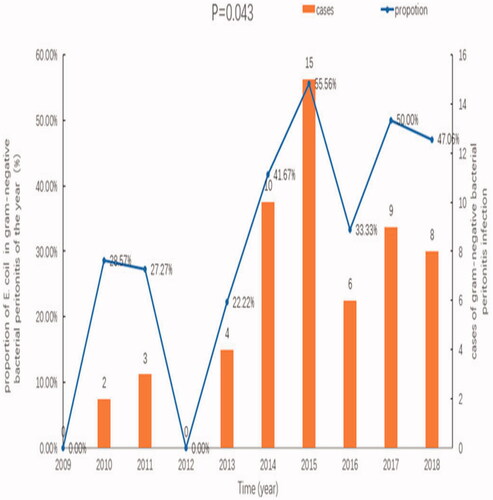Figures & data
Figure 2. Changes in the incidence and proportions of gram-negative bacterial peritonitis, relative to the overall peritonitis incidence, at our center from 2009 to 2018.

Table 1. Bacterial composition associated with peritonitis, according to study groups [n (%)].
Table 2. Antimicrobial sensitivity and resistance against commonly used antibiotics in cases of gram-negative bacterial peritonitis.
Table 3. The demographic and clinical characteristics of patients diagnosed with E. coli peritonitis.
Figure 3. Changes in the incidence and proportions of E. coli-associated peritonitis, relative to overall peritonitis cases, in our center from 2009 to 2018.

Table 4. Antimicrobial sensitivity and resistance in response to commonly used antibiotics in E. coli-associated peritonitis.
Table 5. Comparison of outcomes between the two groups.
Table 6. Comparison of characteristics between the two groups.
Table 7. Logistic multivariate regression analysis for different types of bacterial peritonitis.
Table 8. Clinical outcomes of peritonitis, according to group [Case (%)].
Table 9. Comparison of prognosis between non-E. coli gram-negative bacteria group and E. coli bacteria group [cases (%)].

